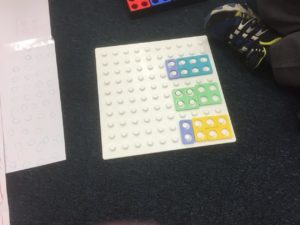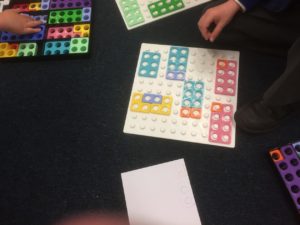Category Archives: [Subposts] Numeracy
Estimation and Rounding
Data Analysis
Ideas of Chance and Uncertainty
Angle, Symmetry and Transformation
Stages of Early Arithmetical Learning
What is SEAL?
SEAL stands for Stages of Early Arithmetical Learning.
In 1992 Dr. Robert Wright began developing the Maths Recovery Programme. This is an evidence based intensive assessment and intervention process for targeting pupils who are having difficulties with numeracy and maths. The underlying model for Maths Recovery was that children acquire strategies and numerical knowledge through a series of different stages – the Stages of Early Arithmetical Learning. It looks at the relative sophistication of children’s strategies for dealing with number and allows teachers to build on those skills. For example, the child who has no means of working out 9 + 3 other than counting out nine counters, then counting out three counters and then counting all of the counters from 1 to 12, is using a far less sophisticated strategy who can say 9 + 3 is the same as 10 + 12 so I know that the answer is 12. The progression of SEAL is as follows:
Emergent
Perceptual
Figurative
Counting on
Facile
Over the years it has been recognised that using the Maths Recovery approaches can promote problem solving in numeracy. By using this approach in our classes we can ensure that learners have a firm foundation for understanding number, as it ensures that their strategies are based on understanding rather than on processes or “tricks”.
To help promote this in schools, planners have been created which support the different stages of SEAL and also provide teachers with activities which help to develop children’s strategies. The planner is available to download here:
SEAL-Forward-Planners-All-stages
SEAL-Forward-Planners-blank-for-all-stages
In order to ensure that each pupil is working at the correct stage, there is also a diagnostic assessment that can be used to help which is available to download here:
The assessment is best completed on a one-to-one with each pupil and it is important not to give any visual clues or prompts. Also, try to end the assessment on a positive note by returning to an activity where they pupil has been successful. For any further support or to chat it through please contact Maria.Mcarthur2@argyll-bute.gov.uk
Once you have completed the diagnostic, or decided which planner to start on, the activities to follow with each stage can be found in the book by Robert J. Wright et al. “Teaching Number: Advancing children’s skills and strategies” and copies of this book are available at various different retailers including Amazon and Brown’s Books for Students.
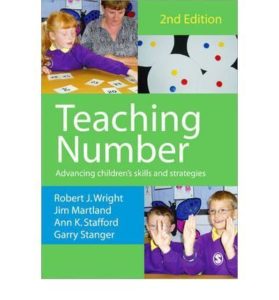
At the moment we have 10 schools piloting the use of SEAL at Primary 1, with the SEAL planner replacing their numeracy work. The 10 schools are: Tobermory Primary, Salen Primary, Kilmartin Primary, Lochgilphead Primary, Inveraray Primary, Kirn Primary, Sandbank Primary, Dunoon Primary, Colgrain Primary and Park Primary. The first training day took place in September with colleagues from West Dunbartonshire Council providing the training, working closely with our own Numeracy team.
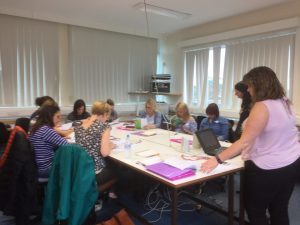
Our practitioners hard at work on the first training day.
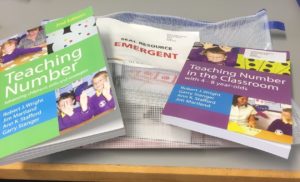
The packs that were provided for each of our pilot schools. To find out how to order these packs please contact Maria McArthur.
Our second training day took place on Wednesday 24th January at the Inveraray Inn. The practitioners all found the session useful and commented particularly on how helpful it was to be able to discuss and share ideas with others. We are again grateful to the West Dunbartonshire Raising Attainment Team for their excellent presentation and for all of the guidance that they provided.
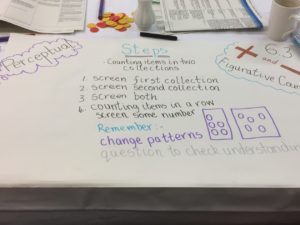
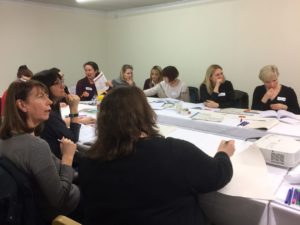
Lots of engaging professional discussion on using the Perceptual and Figurative planners to support addition and subtraction.
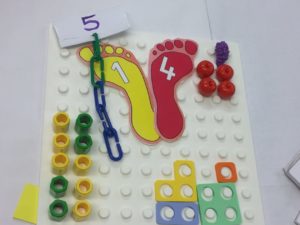
How many different ways can we make 5? Importance of using a variety of concrete materials to assess understanding.
If you are interested in using this approach in your own school, or you are looking for further support around developing SEAL then please contact Maria.Mcarthur2@argyll-bute.gov.uk
Concrete Materials in Argyll and Bute
Argyll and Bute welcomed Mark McCourt from LaSalleEducation in September for a day’s training on Concrete, Pictorial, Abstract, Language and how practitioners can use this approach in their classes, from Early Years to National 5. Over 40 practitioners attended this event, with our secondary colleagues being provided with a bundle of resources to trial with their classes. The PowerPoint used on the day has lots of ideas on how to use Cuisenaire rods, algebra tiles, Dienes materials and even lego. If you would like to investigate yourself then you can download it here:
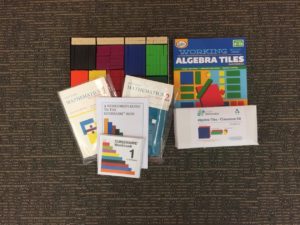
https://completemaths.com/platform
Or why not take a look at this one with a wide range of ideas and top tips: http://cuisenaire.co.uk/
The use of concrete materials to support our younger learners is well established in our schools however it is important to ensure that all of our pupils can benefit from this approach and that using concrete materials allows all our learners to develop a strong conceptual understanding of mathematics.
Our head teachers got into the Concrete Materials act as well during one of their meetings.

 Always learning in Argyll and Bute.
Always learning in Argyll and Bute.
We were delighted to welcome Gillian Orr from Hermitage Academy who introduced our leaders to the use of Algebra Tiles whilst Maria McArthur gave them a whistle stop tour of Cuisenaire rods. The presentation used can be downloaded below and would be suitable for use in your classes as well:
Concrete Materials – an introduction
We would welcome any feedback that you may have regarding these resources so please email Maria.Mcarthur2@argyll-bute.gov.uk if you have any suggestions or to send us some of the resources that have been developed for your own pupils.

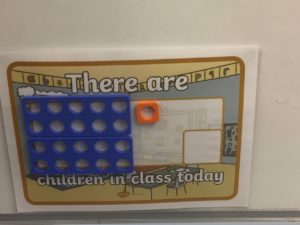
Lots and lots of different ways to be using your Numicon with the Early Years! We especially love the spaghetti challenge! How many pieces of Numicon can you string onto a piece of spaghetti? This also helps to develop fine motor control and mark making so it all fits in beautifully with the literacy strategies being developed for the Early Years! Do you have any fantastic photos to share? Email them to: Maria.Mcarthur2@argyll-bute.gov.uk
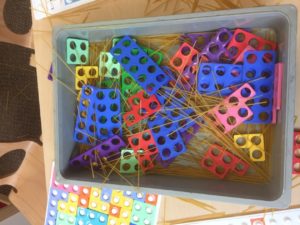
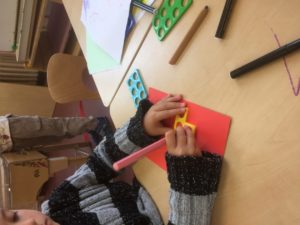

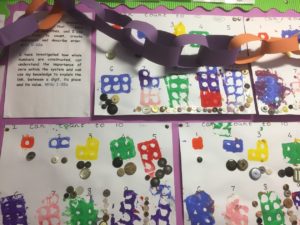
How many different ways can you make the story of 8?
Planning, Assessment and Moderation in Numeracy
This document has been circulated by Education Scotland to promote professional dialogue within schools and to help staff create good learning intentions. Recent feedback from the QAMSO events in Scotland showed that there was still a mismatch between understanding of Learning Intentions and Success Criteria. This document may help!
WhatmakesagoodLearningIntention_tcm4-660845
Education Scotland have also published a document discussing the Significant Aspects of Learning and how to assess progress and achievement in numeracy which may provide a starting point for professional dialogue:
Assessing-progress-and-achievement-in-numeracy-and-mathematics
When discussing planning, assessment and moderation within your establishment it is a good idea to use the guidance on achieving a level to help guide and provide a focus for professional dialogue:
Click on the links below to see some planning examples, including holistic assessments that are being used in some of our schools. These examples are designed to encourage professional dialogue around planning within your own establishments. The examples include the key elements within NAR: experiences and outcomes, learning intentions and success criteria, quality learning experiences, assessment, evaluation of learning, feedback and next steps and reporting. There is no expectation that your plans include all of these elements however it is important that professional dialogue takes place around all of them.
third-level-planning-second-format
second-level-planning-second-format
MathsNARPlanningGlenbarrPrimary
Here is an example of a second level planner which bundles together four numeracy outcomes and two maths outcomes. It includes the learning intentions, planned learning and teaching, hinge questions and the holistic assessment that would be used with the learners towards the end of the block of learning.
If you have any examples of bundling and holistic assessment that you would be willing to share with us then please email Maria.Mcarthur2@argyll-bute.gov.uk
Continuous Lifelong Professional Learning
Glow Link to the National Numeracy and Mathematics Hub
The National Numeracy and Mathematics Hub is a virtual learning environment for all practitioners, providing an innovative approach to career-long professional learning across all sectors. It provides:
- Professional learning in different aspects of numeracy with a focus on progression, numeracy and mathematics skills, numeracy across learning, assessment, moderation and teaching.
- Career-long professional learning opportunities of various types such as broadcasts, professional reading and action research.
- An easy to use environment where you can share and work with colleagues from across Scotland as well as those from your own school or authority
https://glowscotland.sharepoint.com/sites/PLC/numeracyhub/SitePages/Modules%20%26%20Sessions.aspx
National Numeracy and Mathematics Framework for Assessment
This resource has been produced to support staff in developing their understanding of progression within the experiences and outcomes. It identifies within each organiser the key milestones and building blocks that learners should know before moving on to the next stage of learning. Numeracy and mathematics organisers are not taught in isolation from each other and knowledge in one organiser may be required to progress in other organisers.
National-Numeracy-and-Mathematics-Progression-Framework
Learning Together – Mathematics (HMI)
Assessing Progress and Achievement in Numeracy and Mathematics
Mike Askew
Mike is the Adjunct Progessor of Education at Monash University, Melbourne. We were delighted to welcome him to Argyll and Bute on the 26th September 2017, where he inspired a room full of enthusiastic practitioners with his teaching ideas and concepts around problem solving. The pages below focus specifically on his work in Transforming Primary Maths.
http://mikeaskew.net/page3/page2/files/Mathswithmeaning.pdf
http://mikeaskew.net/page3/page2/files/Its%20all%20relative.pdf
http://mikeaskew.net/page3/page4/files/EffectiveTeachersofNumeracy.pdf
http://mikeaskew.net/page3/page2/files/LearningMultplicationFacts.pdf
http://mikeaskew.net/page3/page2/files/LearningSubtraction.pdf
http://mikeaskew.net/page3/page2/files/Mathematicalfluency.pdf
http://mikeaskew.net/page3/page2/files/NumberBondsto10.pdf
http://mikeaskew.net/page3/page2/files/Startingfromproblems.pdf
http://mikeaskew.net/page3/page2/files/In%20good%20shape.pdf
http://mikeaskew.net/page3/page2/files/Additive%20reasoning.pdf
http://mikeaskew.net/page3/page2/files/Know%20your%20place.pdf
http://mikeaskew.net/page3/page2/files/Playing%20with%20patterns.pdf
http://mikeaskew.net/page3/page2/files/Sound%20as%20a%20pound.pdf
http://mikeaskew.net/page3/page2/files/The%20perfect%2010.pdf
http://mikeaskew.net/page3/page2/files/The%20perfect%2010.pdf
Further Reading
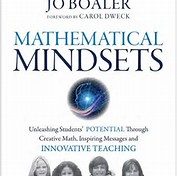 “Mathematical Mindsets” by Jo Boaler, Professor of Mathematical Education at the Stanford Graduate School of Education is a fantastic read for all practitioners. It links closely with the work done by Carol Dweck on Growth Mindsets. We have some copies available to give to schools so to request a copy please contact Maria McArthur or Pauline Inglis.
“Mathematical Mindsets” by Jo Boaler, Professor of Mathematical Education at the Stanford Graduate School of Education is a fantastic read for all practitioners. It links closely with the work done by Carol Dweck on Growth Mindsets. We have some copies available to give to schools so to request a copy please contact Maria McArthur or Pauline Inglis.
The Making Maths Count document published by the Scottish Government in September 2016 lays out the National priorities in raising 
attainment in Mathematics. This is an important document to use when planning your Numeracy development work in schools and highlights in particular the importance of creating a positive attitude towards Maths and Numeracy – and that’s where Jo Boaler comes in! It also talks about how we can raise the profile of Maths with parents and across the country.
Here is a link to an article discussing the importance of Mathematics in the Work Place, which is particularly suitable for those working in our Secondary Schools:
This paper, published by the Department of Education (England) reviews catch-up strategies and interventions which are intended for low-attaining pupils in literacy and/or numeracy at the end of Key Stage 2. Whilst it is written for the English school system, it makes interesting points about the demographics of pupils who are low-attaining and the similarity in trends, and also highlights the difficulties in finding effective numeracy strategies to close the gap for pupils once they have left primary school. It is all about early intervention folks!
Literacy-and-Numeracy-interventions-effectiveness
Numeracy across Learning
Creating a numeracy rich environment
A child’s numeracy experience is enriched by the people and the physical environment around him/her. A numeracy rich environment emphasises the importance of using materials and interactions which facilitiate numeracy and mathematical opportunities. This Toolkit has been develooped for use within the Early Years however has many different ideas for staff to engage with throughout their establishment:
Numeracy across Learning
Please use this link to download the Argyll and Bute Council guidance on Numeracy Across Learning for the secondary schools. It works accross all of the Experiences and Outcomes, exemplifying Level 2, 3 and 4 examples for Numeracy in different subject areas:
GUIDANCE-on-Numeracy-Across-Learning-vs-3
Have a look at these posters for Numeracy across Learning – a bright, colourful and very useful resource:
Numeracy-Across-the-Curriculum-Posters
This resource supports staff to develop knowledge and understanding about progression and standards in numeracy across the curriculum in the early years. It helps to ensure that numeracy is at an appropriate level for learners, promotes challenge and cross curricular links and illustrates how staff can make connections in their planning through exploring clear and relevant links across the curriculum. In particular this may be a model for further developments in learning and teaching across interdisciplinary areas of the curriculum such as STEM.
This link will take you to an exemplar for a Numeracy audit that can be used across departments when you begin to plan as a school for Numeracy across Learning. Please feel free to download and change to suit your own setting. This audit has been set up for use at Third Level:
Numeracy-across-learning-audit-for-third-level
In addition, we have created an example of a Third Level tracker example for teachers to use, as well as an example of a pupil log which again can be changed to suit your own purposes. There is also an example of a holistic assessment from the Geography Department at Oban High School, which includes numeracy outcomes.
Tracking-document-for-Numeracy-across-Learning
Below are links to a variety of websites that can support staff when planning for Numeracy across Learning:
